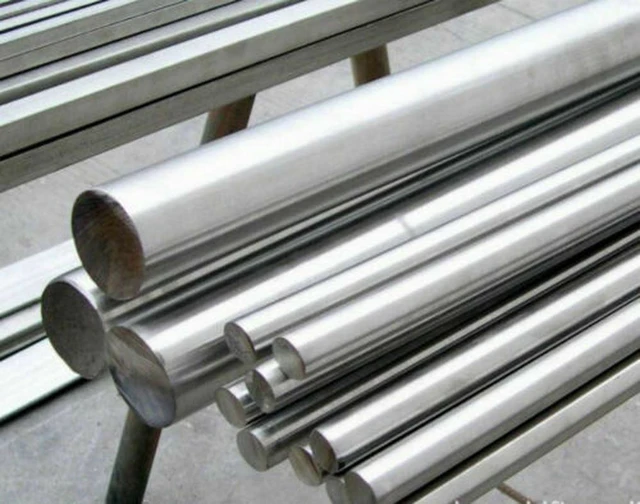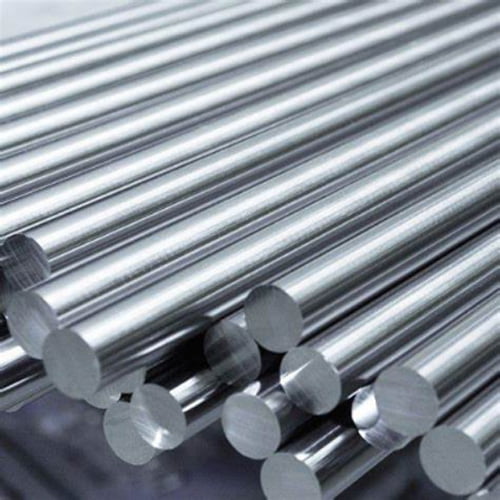Stainless steel is a popular material renowned for its durability and versatility in various industries. Among its diverse grades, 420 stainless steel stands out due to its specific properties and applications. In this article, we’ll delve into seven clarifications about 420 stainless steel bar stock, exploring its composition, uses, advantages, limitations, maintenance, and more.
Introduction

Stainless steel stands tall among the diverse materials driving innovation across industries. Among its grades, 420 stainless steel emerges as a distinctive alloy, renowned for its unique properties and versatile applications in various sectors. In this exploration, we’ll unravel the nuances surrounding 420 stainless steel bar stock, delving into its composition, uses, advantages, limitations, and maintenance. Let’s embark on a journey to understand the fundamental aspects of this remarkable material.
Composition and Properties of 420 Stainless Steel
420 stainless steel comprises primarily chromium and carbon, with additional elements like manganese and silicon contributing to its composition. This alloy often includes trace amounts of nickel or molybdenum, enhancing certain properties based on specific applications.
Its composition grants 420 stainless steel excellent corrosion resistance, making it suitable for various environments where exposure to moisture or corrosive elements is a concern. Additionally, this alloy exhibits moderate strength and can be heat treated to achieve increased hardness, contributing to its versatility across multiple industries.
Applications of 420 Stainless Steel Bar Stock
Industrial Uses
420 stainless steel finds extensive application across multiple industrial sectors due to its remarkable properties. Its corrosion resistance, combined with moderate strength and machinability, makes it a sought-after material for producing a wide array of industrial components.
In manufacturing, 420 stainless steel is utilized for crafting molds, valves, surgical instruments, and various machine components. Its ability to withstand corrosion and wear, along with its ease of machining, makes it a reliable choice in industries where durability and precision are paramount.
Automotive Applications
Within the automotive industry, 420 stainless steel plays a crucial role in the fabrication of various components. Its resistance to corrosion and wear, coupled with its moderate strength, makes it a preferred material for several automotive parts.
This grade of stainless steel is commonly used in crafting shafts, fasteners, pump parts, and other vital components within vehicles. Its ability to withstand harsh conditions and maintain its structural integrity makes it a reliable choice for ensuring the durability and functionality of automotive machinery.
Aerospace Industry
In the aerospace sector, the demand for materials that offer exceptional strength and corrosion resistance is paramount. 420 stainless steel fulfills these requirements, making it a viable choice for various aerospace applications.
This grade of stainless steel finds its place in the aerospace industry for manufacturing structural elements and components. Its high strength, coupled with its resistance to corrosion, renders it suitable for ensuring the reliability and longevity of aerospace machinery operating in demanding environments.
Advantages of 420 Stainless Steel
| Advantages of 420 Stainless Steel | Details |
|---|---|
| Corrosion Resistance | Offers excellent resistance to corrosion, ideal for various environments with moisture or corrosive elements. |
| Machinability | Exhibits relatively easy machinability, facilitating efficient fabrication of intricate components. |
| Heat Treatability | Can be heat treated to achieve increased hardness, enhancing mechanical properties for specific applications. |
| Versatility | Combination of corrosion resistance, moderate strength, and heat treatability makes it versatile across industries. |
| Cost-Effectiveness | Compared to some high-end stainless steels, 420 stainless steel provides a balance of performance and cost efficiency. |
| Moderate Weldability | Allows for welding processes, though preheating and post-weld annealing might be necessary for certain applications. |
| Availability | Widely available in various forms (bars, sheets, etc.) and sizes, making it accessible for diverse industrial needs. |
| Resistant to Scaling at Elevated Temps | Shows resistance to scaling at elevated temperatures, suitable for applications involving heat exposure. |
| Wear Resistance | Demonstrates good wear resistance, contributing to its suitability for various mechanical components. |
| Excellent Formability | Offers good formability for specific manufacturing processes requiring shaping or forming. |
| Moderate Toughness | Provides moderate toughness, making it suitable for applications that demand strength without brittleness. |
| Potential for Surface Finishing | Allows for different surface finishes, enhancing aesthetics and corrosion resistance for specific uses. |
Limitations and Challenges
Lower Hardness in Certain Conditions: Compared to some other stainless steel grades, 420 stainless steel might exhibit lower hardness in specific heat-treated conditions, impacting its suitability for certain high-stress applications.
Potential Corrosion in Harsh Environments: In extremely harsh environments or when subjected to aggressive chemicals, 420 stainless steel may experience corrosion if not adequately maintained.
Comparison with Other Stainless Steels
Corrosion Resistance: While all three grades exhibit corrosion resistance, 316 stainless steel surpasses both 420 and 304 in its resistance to certain corrosive environments, especially those containing chlorides.
Hardness and Strength: 420 stainless steel offers higher hardness compared to both 304 and 316 stainless steels due to its heat-treatable nature, making it suitable for applications requiring increased hardness.
Machinability: 420 stainless steel tends to have better machinability compared to 316 stainless steel but might be slightly inferior to 304 stainless steel.
Maintenance and Care Tips for 420 Stainless Steel Bar Stock
Regular Cleaning: Clean the stainless steel surface regularly using mild soap or detergent and warm water. Rinse thoroughly and dry with a soft cloth to prevent water spots or staining.
Avoid Harsh Chemicals: Refrain from using abrasive cleaners, bleach, or cleaners containing chlorine, as they can damage the stainless steel surface and compromise its corrosion resistance.
Prompt Removal of Contaminants: Immediately clean off any spills or contaminants, especially acidic or corrosive substances, to prevent potential damage to the stainless steel surface.
Use Specific Stainless Steel Cleaners: Utilize specialized stainless steel cleaners or polishes designed for stainless steel surfaces to maintain their luster and prevent corrosion.
Directional Cleaning: When cleaning, follow the grain of the stainless steel surface to avoid potential scratching or damage to the finish.
How to Choose the Right 420 Stainless Steel Bar Stock

Intended Use: Define the specific purpose for which the stainless steel will be utilized. Whether it’s for industrial machinery, automotive components, or other applications, understanding the intended use is fundamental.
Required Strength: Assess the strength requirements for the application. Determine the level of strength and hardness needed for the particular components or machinery.
Corrosion Resistance: Evaluate the environmental conditions in which the stainless steel will operate. Ensure that the chosen grade, in this case, 420 stainless steel, offers adequate corrosion resistance for the specific environment it will encounter.
Environmental Factors: Consider the temperature, moisture levels, exposure to chemicals, and other environmental factors the stainless steel will be subjected to. These can influence the choice of 420 stainless steel grade and surface finish.
Quality Standards: Verify that the stainless steel bar stock meets industry standards and quality requirements to guarantee its reliability and performance.
Factors Impacting the Cost of 420 Stainless Steel
Raw Material Prices: Fluctuations in the costs of raw materials, such as chromium and carbon, directly impact the overall price of 420 stainless steel.
Production Processes: Different manufacturing processes, especially those involving heat treatment or precision machining, can contribute significantly to the final cost of the stainless steel.
Market Demand and Supply: Market dynamics, including the demand-supply ratio, market trends, and global economic conditions, play a pivotal role in determining the pricing of 420 stainless steel.
Quality and Specifications: Higher-quality 420 stainless steel, meeting stringent specifications or industry standards, might command a higher price due to its superior properties and reliability.
Finishing and Additional Treatments: Surface finishes, treatments, or additional modifications applied to the stainless steel can influence its cost, especially if specialized finishes or treatments are required.
Importance of Quality Control and Standards
Consistent Performance: Implementing quality control ensures that each batch of 420 stainless steel meets predefined standards, guaranteeing consistent performance and reliability in various applications.
Product Integrity: Rigorous quality checks safeguard the integrity of the stainless steel, ensuring it possesses the required properties, such as corrosion resistance, strength, and durability.
Customer Satisfaction: Adhering to quality standards contributes to producing reliable and high-quality stainless steel, thereby fostering customer trust and satisfaction.
Compliance and Safety: Following industry standards ensures compliance with regulations and safety protocols, safeguarding against potential hazards and ensuring the safe use of 420 stainless steel.
Reduced Waste and Costs: Quality control measures help in identifying and rectifying issues early in the manufacturing process, reducing waste and associated costs.
Future Prospects and Innovations
Enhanced Properties: Continuous research aims to enhance the properties of 420 stainless steel, focusing on improving its strength, corrosion resistance, and overall performance in diverse applications.
Advanced Manufacturing Techniques: Innovations in manufacturing processes, such as refining heat treatment methods or precision machining, seek to optimize the production of 420 stainless steel, ensuring higher quality and efficiency.
Specialized Applications: As industries evolve, there’s a growing exploration of specialized applications for 420 stainless steel, leveraging its unique properties to meet the demands of emerging technologies and industries.
Sustainability and Environmental Focus: Efforts to develop eco-friendly production methods and recycling techniques for stainless steel align with the global focus on sustainability, contributing to a more environmentally conscious approach.
Integration with New Technologies: Integration of 420 stainless steel with emerging technologies, such as additive manufacturing or nanotechnology, opens doors to innovative applications and improved material properties.
Conclusion
In conclusion, 420 stainless steel bar stock presents itself as a valuable material in numerous industries due to its corrosion resistance, moderate strength, and versatility.
FAQs
Is 420 stainless steel magnetic?
- Yes, it exhibits magnetic properties.
Can 420 stainless steel be welded?
- Yes, it can be welded, but preheating and post-weld annealing might be necessary.
What are the typical heat treatment methods for 420 stainless steel?
- Heat treatments like annealing, quenching, and tempering are commonly used to achieve desired mechanical properties.
Does 420 stainless steel corrode?
- While it resists corrosion in mild environments, it can corrode in harsh conditions without proper maintenance.
Is 420 stainless steel suitable for food applications?
- Yes, it’s used in some food-processing applications due to its corrosion resistance and ease of cleaning.
